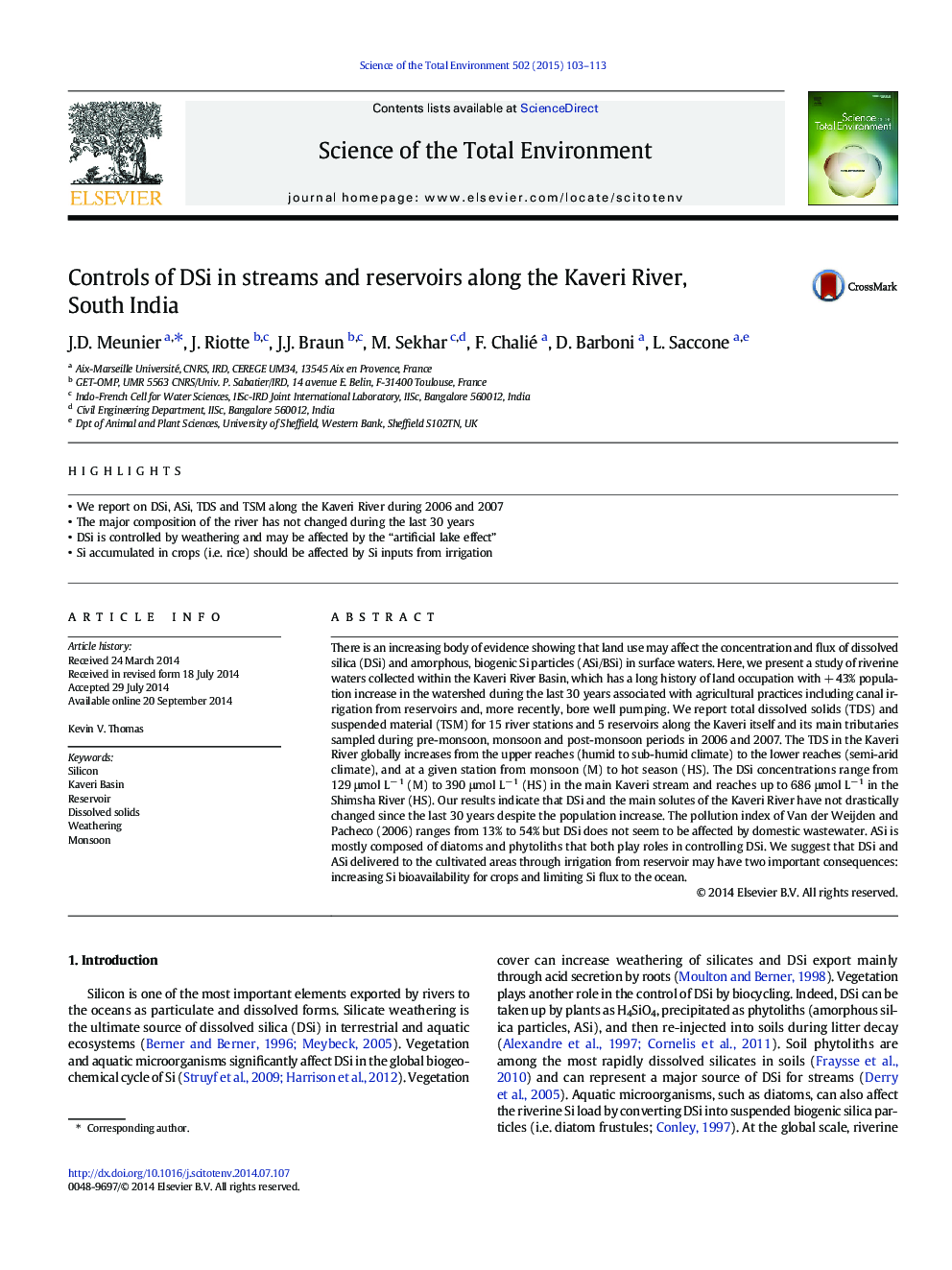| Article ID | Journal | Published Year | Pages | File Type |
|---|---|---|---|---|
| 6328387 | Science of The Total Environment | 2015 | 11 Pages |
â¢We report on DSi, ASi, TDS and TSM along the Kaveri River during 2006 and 2007â¢The major composition of the river has not changed during the last 30 yearsâ¢DSi is controlled by weathering and may be affected by the “artificial lake effect”â¢Si accumulated in crops (i.e. rice) should be affected by Si inputs from irrigation
There is an increasing body of evidence showing that land use may affect the concentration and flux of dissolved silica (DSi) and amorphous, biogenic Si particles (ASi/BSi) in surface waters. Here, we present a study of riverine waters collected within the Kaveri River Basin, which has a long history of land occupation with + 43% population increase in the watershed during the last 30 years associated with agricultural practices including canal irrigation from reservoirs and, more recently, bore well pumping. We report total dissolved solids (TDS) and suspended material (TSM) for 15 river stations and 5 reservoirs along the Kaveri itself and its main tributaries sampled during pre-monsoon, monsoon and post-monsoon periods in 2006 and 2007. The TDS in the Kaveri River globally increases from the upper reaches (humid to sub-humid climate) to the lower reaches (semi-arid climate), and at a given station from monsoon (M) to hot season (HS). The DSi concentrations range from 129 μmol Lâ 1 (M) to 390 μmol Lâ 1 (HS) in the main Kaveri stream and reaches up to 686 μmol Lâ 1 in the Shimsha River (HS). Our results indicate that DSi and the main solutes of the Kaveri River have not drastically changed since the last 30 years despite the population increase. The pollution index of Van der Weijden and Pacheco (2006) ranges from 13% to 54% but DSi does not seem to be affected by domestic wastewater. ASi is mostly composed of diatoms and phytoliths that both play roles in controlling DSi. We suggest that DSi and ASi delivered to the cultivated areas through irrigation from reservoir may have two important consequences: increasing Si bioavailability for crops and limiting Si flux to the ocean.
